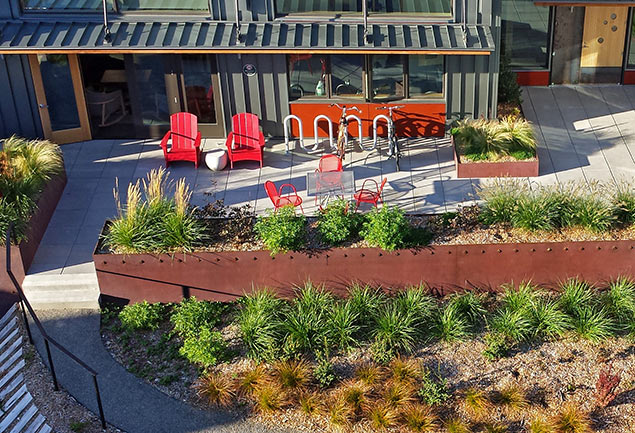Written by Watershed Staff
Do you have a landscape project you are considering for LEED certification and wonder how the process might differ for the new LEED v4? Well, depending on whether or not you embrace green building in the landscape, you may be pleased or dismayed. While LEED v4 promised to raise the bar for achieving platinum status, the guidelines for the landscape, as usual, lag behind the architecture.
If you are a green landscape enthusiast, you’ll be happy to know that some of the Sustainable Sites Initiative™ (SITES™) credits are beginning to find their way into LEED. The bulk of the SITES™ credits, however, remain currently unincorporated. On the bright side, ASLA and the University of Texas at Austin are in negotiations with the Green Building Certification Institute (GBCI) to establish a collaboration that will ensure the long-term future of SITES™ and aid market transformation for green building practices in the landscape.
If you aren’t a green landscape enthusiast and just want your credits, then you’ll be pleasantly surprised that the bulk of the credit changes won’t impact your development footprint substantially. In some cases, you might actually be able to gain buildable area. What you will see overall, however, are increased upfront assessment and design documentation requirements.
Here’s the inside scoop on the five major landscape-related credit differences between LEED 2009 and LEED v4, along with our take on their implications.
Sustainable Sites Category (SS)
Site Assessment - NEW
This is a new credit adapted from SITES™. To gain this credit, you are required to document site conditions ahead of time. Conditions include topography, hydrology, climate, vegetation including significant trees, soils, human use, and human health effects.
Our take
Sound daunting? Check out their handy worksheet. The level of documentation required is pretty minimal and all you need do with it is indicate how it influenced the project design. Depending on your site, however, you may need up-front wetland or stream delineation and arborist services to achieve this credit. The bottom line for the credit seeker is that to achieve this one credit point, you will need to pay consultant(s) to document some of these items that they may not have otherwise.
For the green landscape enthusiast, awarding a credit based upon how these assessments influenced the design could be seen as subjective. We feel this credit could be expanded greatly to provide prescriptive paths for what you could do with the information about existing site conditions, once acquired. These paths could then yield a greater point total that would help to justify to the upfront expense the client has to pay to achieve their point.
Sample wetland and stream delineation.
Site Development - Protect or Restore Habitat - CHANGED
To achieve this credit in LEED 2009, greenfield or undeveloped sites had a lot of dimensional requirements offset from built features. This was intended to limit the building footprint and therefore impacts to native vegetation. In LEED V4, the measurement method has been simplified to 40% protection from development and construction activity and is now a requirement to achieve the credit. In addition to that, on-site restoration is also required or a new financial support option has been added as alternative.
The measurement method for on-site restoration using native or adapted vegetation, has also been changed. In the 2009 version, it was 50% of the site excluding the building footprint. Now, it’s 30% of the site, including building footprint.
Restoration of all disturbed or compacted soils that will be revegetated is also required.
Our take
On a purely numbers basis, it is impossible to know how much protection or loss of greenfield area might occur with this new system. The freedom for the site designer could result in better choices for protection of land and habitat resources as well as flexibility to meet overall project goals. On the other hand, LEED 2009 provided exclusions to where development could occur. While limiting, it resulted in contiguous stretches of greenfield area. Now, debate could occur over what will truly remain protected from activity as well as what potential loss of functional greenfield habitat might result.
In the 2009 version of LEED, you either had greenfield site OR a previously developed or degraded site, and only the latter could achieve credits for restoration. Now, any site has the opportunity to achieve credit through restoration activities. This is a win-win for greenbuilding landscape enthusiasts and credit seekers.
Excluding the building footprint from measuring the restoration area required, as in the 2009 version, resulted in the possibility of a really large building with a very small restoration component. To the applause of landscape architects across the globe, LEED v4’s method of calculating it across the entire site provides a greater equilibrium between the building and the landscape.
The restoration of soils seems more stormwater focused than planting based, since most qualified landscape architects and designers know that restoration of compacted soils is required if you want your plants to live and thrive.
The fee in lieu option through financial support could allow for credit with no on-site restoration. We have been involved in developing in-lieu fee programs for mitigation, and know the rigor that must go into developing a successful program that achieves goals within the appropriate region. For LEED’s fee in lieu option, we want to know where that money goes, and how many landscapes can be built for $0.40 a square foot besides lawn? We want to know how this option is helping the green building movement. This is a credit, not a requirement . At the very least, the money generated from a fee in lieu option ought to be more than the cost of the landscape installation required to achieve the credit in the first place, not less, and ought to go toward a local habitat bank or protection of local habitat resources.
Open Space - CHANGED
The provision for outdoor space to achieve this credit has increased to 30% from the 2009 version, which required 20%. The option to exceed local zoning requirements has also been removed. Provisions have also been put on what that outdoor open space must be, including a garden with a diversity of vegetation and year-round interest or a preserved or created habitat that includes elements of human interaction.
Greenfire Campus, designed to achieve LEED Platinum, has extensive open areas.
Our take
This credit update provides for greater emphasis on the open space having vegetation with structure (trees and shrubs, etc.). Such emphasis creates a greater possibility of a landscape with habitat complexity.
Water Efficiency Category (WE)
The Greenfire Campus landscape used drought-tolerant and native plantings to reduce water use, as well as harvesting water in two large cisterns for re-use.
Outdoor water use reduction - CHANGED
In LEED 2009, Outdoor Water Use Reduction was a credit only; in LEED V4, it is both a prerequisite and a credit. The prerequisite is that you must have either no permanent irrigation or reduce your irrigation requirement 30% from a calculated baseline. For credit, you will receive at least one point for no permanent irrigation and at least one point for further reducing irrigation demand by 50%. Additionally, the allowance for temporary irrigation has increased from one year to two years allowable.
Our take
The implementation of a prerequisite for reduction of water use is a big step forward. There are enough new drought-tolerant species and cultivars that this is a no-brainer. There is no change in the credit point for reduction between versions. Last, increasing the allowance for temporary irrigation to two years makes it much more viable that a landscape could be established with no permanent irrigation.
Credit: WATER METERING - NEW
This new credit requires use of water meters for two or more subsystems, including indoor and outdoor uses. The two uses applicable to the landscape include metering irrigation and reclaimed water, which can be used for irrigation.
Our take
While dedicated meters have the added cost of the meter and the installation up front, they can reduce waste water bills. Irrigation accounts for 50-70% of water consumption. Indoor water use goes into the sewer to be processed, whereas outdoor water use goes into the ground. By establishing a separate meter, you reduce your sewer fees and therefore your water bill. Additionally, you can have an accurate measure of the outdoor water use. Last, you get the benefit of a separate shutoff valve for the system.
Materials and Resources Category (MR)
Rather than go into each Materials and Resources credit and pre-requisite, since for the most part they apply to the architecture, landscape architects or designers may be more involved with:
- Waste reduction from demolition and recycling
- Reuse of materials
- Obtaining Environmental Product Declarations
- Materials sourcing (extraction and sourced sustainably)
Conclusion
While many of the credit changes may result in added consultant and likely material costs, the ultimate goal is to design a more integrated, sustainable project that will result in reduced life-cycle impacts and energy savings. These reductions will help both the environment and your utility bills. Plus, you will have the added benefit in knowing that your project has been designed more sustainably from project initiation through installation.
This blog is part of our Green Building series. Check out the other installments in this series.
INTERPRETING YOUR GREEN BUILDING AND INFRASTRUCTURE PROJECTS
In this blog, we explore how interpretive signs can benefit your building or infrastructure project by promoting sustainability, gaining public buy-in to green methodologies, and earning credits for certification.
GREEN CERTIFICATIONS FOR YOUR NON-BUILDING PROJECTS
Looking for a green certification for your non-building project, but don't know your options? In this blog, we explore the suite of green rating systems and certifications to help you find the right one for your project.











